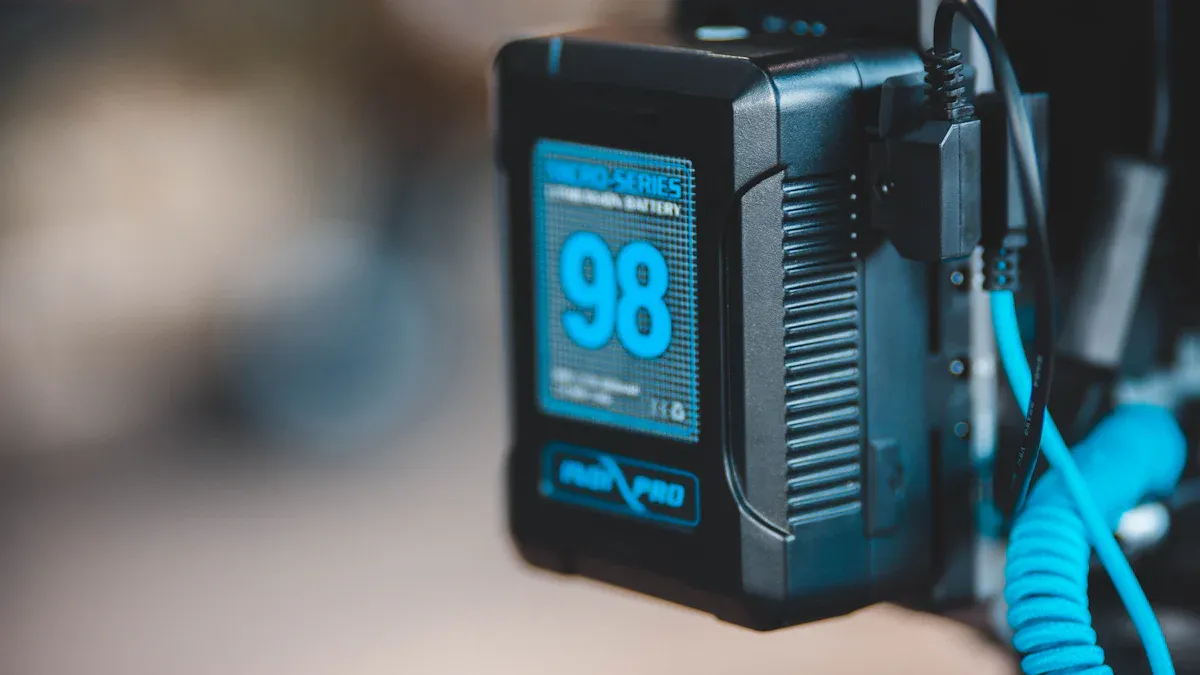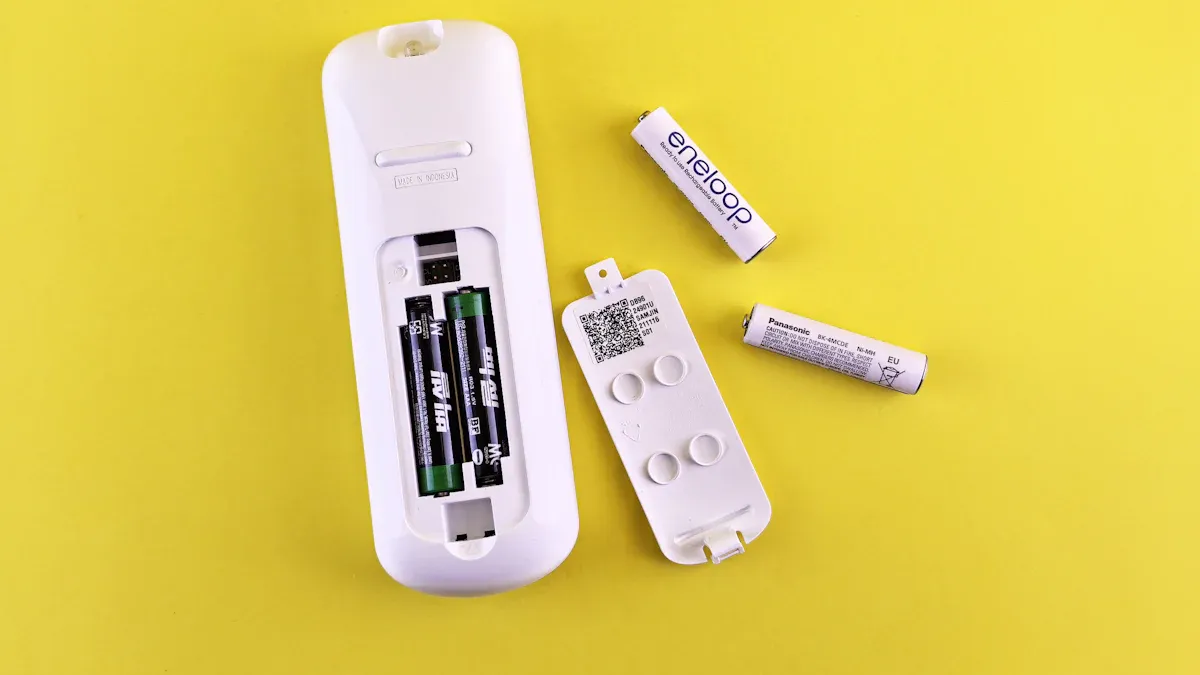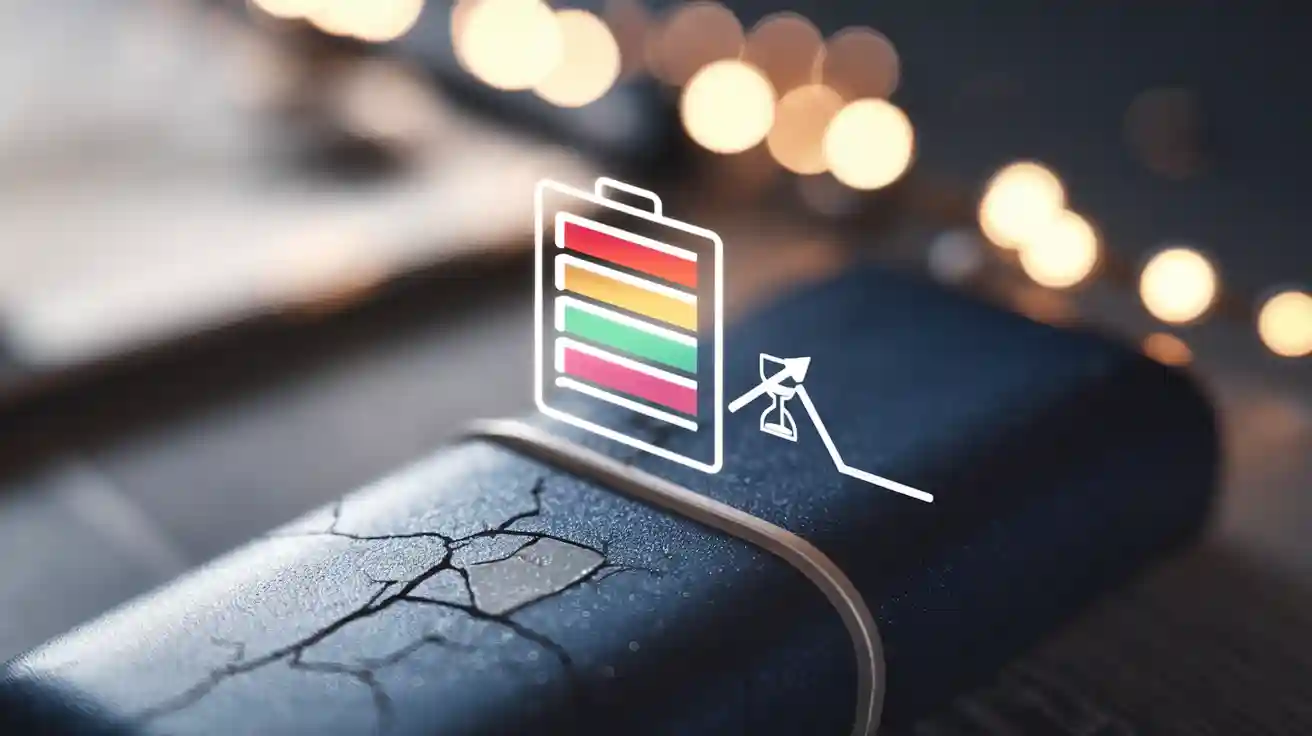Why lithium battery's capacity will become less?
You might see that lithium battery's capacity drops over time. This is because normal changes happen inside the battery. A solid layer called SEI grows inside. The battery also loses active materials. Both things make the battery hold less charge. Hot temperatures can make these changes happen faster. These effects mean your battery will not last as long as when it was new.
Key Takeaways
- Lithium batteries lose power as time passes because of changes inside, like SEI layer growth. Knowing this helps you take care of your battery better.
- Try to keep your battery charged between 20% and 80%. This makes the battery less stressed and slows down power loss.
- Put your battery in a cool, dry spot. Keep it charged between 40% and 60%. This keeps the battery steady and helps it last longer.
- Check your battery health often with apps. Finding problems early can stop more damage and keep your battery safe.
- Do not charge your battery too much. Use chargers that have safety systems. This keeps your battery safe and working well.
Lithium battery capacity loss

Chemical changes
Every lithium ion battery goes through chemical changes. These changes happen when you charge or use the battery. The most important change is a layer called SEI. This layer forms on the anode after the first charge. Over time, the SEI gets thicker and uses up lithium ions. When this layer grows, the battery does not work as well. The battery cannot hold as much charge as before. This is why lithium battery capacity loss happens.
- The SEI layer keeps getting bigger each time you use the battery.
- Fast charging or cold weather can cause lithium plating. Some lithium ions get stuck and cannot move anymore. The battery cannot use these ions.
- Electrolyte decomposition also happens inside the battery. The liquid inside breaks down and the battery works less well.
Tip: Charge your battery at normal speed and keep it at room temperature. This can slow down these chemical changes.
Here is a table that shows how SEI growth affects lithium battery's capacity:
| Evidence Description | Key Findings |
|---|---|
| The main reason for losing capacity is SEI growth on the anode. | Knowing about SEI helps make batteries last longer and safer. |
| A thicker SEI layer makes it harder for the battery to work. | When the anode gets bigger, more SEI forms and more lithium is lost. |
Physical degradation
Physical changes also make lithium battery capacity go down. You may see your battery does not last as long after many uses. This is because the inside parts wear out over time.
- Mechanical degradation means battery parts get weaker and lose shape.
- If pouch-type cells lose stack pressure, the battery becomes less stable.
- Electrolyte oxidation happens at high voltage or high heat. This can make the battery lose charge quickly.
- Electrode instability is another problem. The active material in the positive electrode can react with the electrolyte. This lowers the battery's capacity.
Note: Keep your battery away from heat and do not always charge it to full. This can help stop physical damage.
Self-discharge
Lithium ion batteries lose charge even if you do not use them. This is called self-discharge and it is normal. Some things can make it worse.
- Most lithium ion batteries lose about 5% of their charge in the first day.
- After that, they lose about 1-2% each month.
- If you keep your battery in a humid place, water can get inside. This reacts with lithium salt and makes bad chemicals. These chemicals hurt the battery and make it lose charge faster.
- High humidity can also rust metal parts and damage the SEI layer.
Tip: Store your battery in a cool, dry place to slow down self-discharge.
Cycle aging

Charge and discharge cycles
You use your lithium ion battery often. Every charge and discharge is a cycle. These cycles slowly make the battery weaker. Inside, chemical and physical changes happen. The SEI layer gets thicker after each cycle. Sometimes, lithium plating traps lithium ions. These ions cannot be used anymore.
Here is a table that shows how different things affect battery capacity as you use more cycles:
| Mechanism | Impact on Capacity Loss | Cycle Dependency |
|---|---|---|
| SEI Layer Growth | Gets worse with more cycles | Happens faster at high rates |
| Lithium Plating | Drops quickly as cycles increase | Not linked to charge speed |
Most lithium ion batteries last 300 to 500 cycles. After that, their capacity drops below 80%. Some batteries, like LiFePO4, last much longer. Using your battery often makes it hold less charge over time.
- More cycles cause more aging.
- SEI layer and lithium plating lower capacity.
- Charging regularly helps keep the battery working well.
Tip: Try not to let your battery run out all the way. Charge it often to slow down capacity loss.
Overcharging effects
Charging too much can hurt your lithium ion battery. If you go past the safe limit, the battery gets hot. This heat can cause fires or even explosions. The liquid inside may break down and make gas. The battery can swell up. Dendrites can form and cause short-circuits.
- Overcharging makes batteries wear out faster.
- Inside resistance goes up, so the battery works less well.
- Too much heat can cause thermal runaway.
- The liquid and electrodes get damaged and store less energy.
Battery management systems (BMS) help stop overcharging. They use special features to keep batteries safe:
| Protective Measure | Function |
|---|---|
| Over-Current Protection | Stops too much current during charging or using. |
| Over-Voltage Protection | Stops charging past safe voltage. |
| Under-Voltage Protection | Stops using battery below safe voltage. |
| Over-Temperature Protection | Keeps battery at a safe temperature. |
| Under-Temperature Protection | Helps prevent damage from cold. |
Note: Always use chargers with BMS to protect your battery.
Temperature impact
Temperature changes affect battery capacity. Cold weather can make lithium coat the anode. This raises resistance. Hot weather makes the cathode break down faster. Both hot and cold make the battery age faster.
Here is a table that shows how temperature affects battery aging:
| Operating Temperature | Degradation Rate after 260 cycles |
|---|---|
| 25 °C | 4.22% |
| 55 °C | 13.24% |
- High temperatures make the SEI layer grow faster.
- Heat causes electrodes to break down more.
- Cell resistance goes up when it is hot.
The best temperature for battery life is about 70°F (21°C). Keep your battery between 32°F and 95°F. Extreme temperatures can damage your battery and make it age faster.
Tip: Store and use your battery in a cool, dry place. This helps your battery last longer.
Reversing battery capacity loss
Repair methods
There are ways to fix a small part of lost battery capacity. One way uses a chemical called TEMPO. This method works inside the battery. You do not need to open the battery. TEMPO helps stuck lithium become usable again. When you charge the battery, TEMPO changes and takes electrons from trapped lithium. This can bring back about 5.89% of lost capacity. It can help the battery last up to 70% longer. You do not need hard recycling steps for this method.
- TEMPO helps make more active lithium ions.
- The process happens inside the battery.
- You may see a small boost in battery life.
Note: These repair methods are new. Most people cannot do them at home yet.
Reconditioning
Reconditioning means trying to get back some lost battery power. You follow a few steps:
- Learn what makes your battery lose power.
- Check the battery’s voltage, capacity, and resistance.
- Discharge the battery all the way and let it rest.
- Charge it slowly to wake up lithium ions.
- Discharge and recharge the battery a few times.
- End with a full charge.
- Test the battery to see if it got better.
- Use good habits to keep your battery healthy.
If you recondition your battery the right way, you might get back 65-75% of its old power. This can help your battery last longer and work better.
⚠️ Reconditioning can be risky. Old batteries may get hot, swell, or catch fire. Refurbished batteries may not work as well as new ones. They may not be safe for strong devices.
Replacement
Sometimes, fixing or reconditioning does not work. You need to get a new battery if yours does not hold charge or looks damaged. Getting a new battery is the safest way to get full power back.
Here is a table that shows how much it costs to replace a lithium ion battery in common devices:
| Device Type | Average Replacement Cost |
|---|---|
| Cellphone | $10 – $35 |
| Tablet | $15 – $50 |
| Laptop | $20 – $90 |
You should get a new battery if yours gets hot, swells, or loses charge fast. New batteries are safer and last longer.
If you have questions about your battery, ask us on our website. We want to help you find the best answer.
Lithium ion battery care tips
Charging habits
You can help your lithium ion battery last longer with good charging habits. Try to keep the charge between 20% and 80%. Charging only up to 80% is better for the battery. This puts less stress on the battery cells. It also slows down how fast the battery loses power. Charging partway is better than charging all the way. Charging to 100% often can wear out the battery faster. Slow charging is safer than fast charging. Use a charger that is about one-fourth of your battery’s size. Unplug your battery when it is fully charged. Do not charge or store your battery at high levels, especially over 80%.
Recommended charging habits:
- Charge to 80%, not 100%.
- Use slow charging if you can.
- Unplug after charging is done.
- Do not charge in very hot or cold places.
Tip: Keeping your battery partly charged helps it last longer.
Storage advice
Storing your battery the right way keeps it healthy. Keep the charge between 40% and 60%. This helps the battery stay stable and safe. Pick a cool, dry place for storage. The best temperature is between 10°C and 25°C. Do not store batteries above 30°C or below -20°C. If you can, use a room with climate control. Keep batteries away from things that can catch fire, and away from kids and pets. Check your battery every few months. If needed, charge it back to 40-60%.
Storage checklist:
- Store at 40-60% charge.
- Keep in a cool, dry place (10-25°C).
- Stay away from very hot or cold spots.
- Check the charge level often.
| Storage Condition | Best Practice |
|---|---|
| Charge Level | 40-60% |
| Temperature | 10-25°C |
| Location | Safe, dry, cool |
| Check Frequency | Every few months |
Note: Batteries kept at 40% charge can keep up to 96% of their power after one year.
Monitoring health
Checking your battery often helps you find problems early. You can use apps like Norsk Guardian™ to watch battery health and charging. These tools show you the temperature, voltage, and current. They send you alerts if something is wrong. You can check more than one battery at a time. Test your battery every year, especially after it runs out or gets too hot or cold. Look for signs like shorter use time or longer charging time. Get a new battery if it drops below 80% of its first run time.
How to monitor battery health:
- Use apps or tools for real-time info.
- Check the charge often.
- Test the battery every year.
- Watch for changes in how it works.
Tip: Checking and caring for your battery often helps stop problems and keeps it safe.
If you have questions about battery care, you can ask us on our website. We want to help you get the best from your battery.
You now understand why lithium battery capacity gets lower. The main reasons are changes inside, heat, and normal use. Here are the important things to know:
| Key Factor | Description |
|---|---|
| Internal Chemical Changes | SEI layer grows, lithium plating, and electrode wear lower capacity. |
| Temperature Control | High heat makes batteries age faster. Keep them cool for longer life. |
| Battery Management System | Good systems stop overcharging and help batteries last longer. |
Batteries will always lose some power, but you can slow it down. Use care tips and check your battery’s health often. If you have questions, you can ask us on our website. Taking care of your battery helps it work well for you! ?
-

 May.2025.11.24Ternary Lithium Battery vs Lithium-ion: Complete Comparison Guide (2025 Edition)Learn More
May.2025.11.24Ternary Lithium Battery vs Lithium-ion: Complete Comparison Guide (2025 Edition)Learn More -

 May.2025.11.214S2P 18650 14.8V Battery: Complete Technical Guide, Specs, Applications & SafetyLearn More
May.2025.11.214S2P 18650 14.8V Battery: Complete Technical Guide, Specs, Applications & SafetyLearn More -

 May.2025.11.18PCM vs BMS in Lithium Batteries: What’s the Difference and Which One Do You Need?Learn More
May.2025.11.18PCM vs BMS in Lithium Batteries: What’s the Difference and Which One Do You Need?Learn More -

 May.2025.11.17Custom Li-ion Battery Design for Medical Devices (2025 Comprehensive Guide)Learn More
May.2025.11.17Custom Li-ion Battery Design for Medical Devices (2025 Comprehensive Guide)Learn More -

 May.2025.11.17The Future of Lithium-Ion Batteries: Innovation, Sustainability, and Global Market TrendsLearn More
May.2025.11.17The Future of Lithium-Ion Batteries: Innovation, Sustainability, and Global Market TrendsLearn More
















